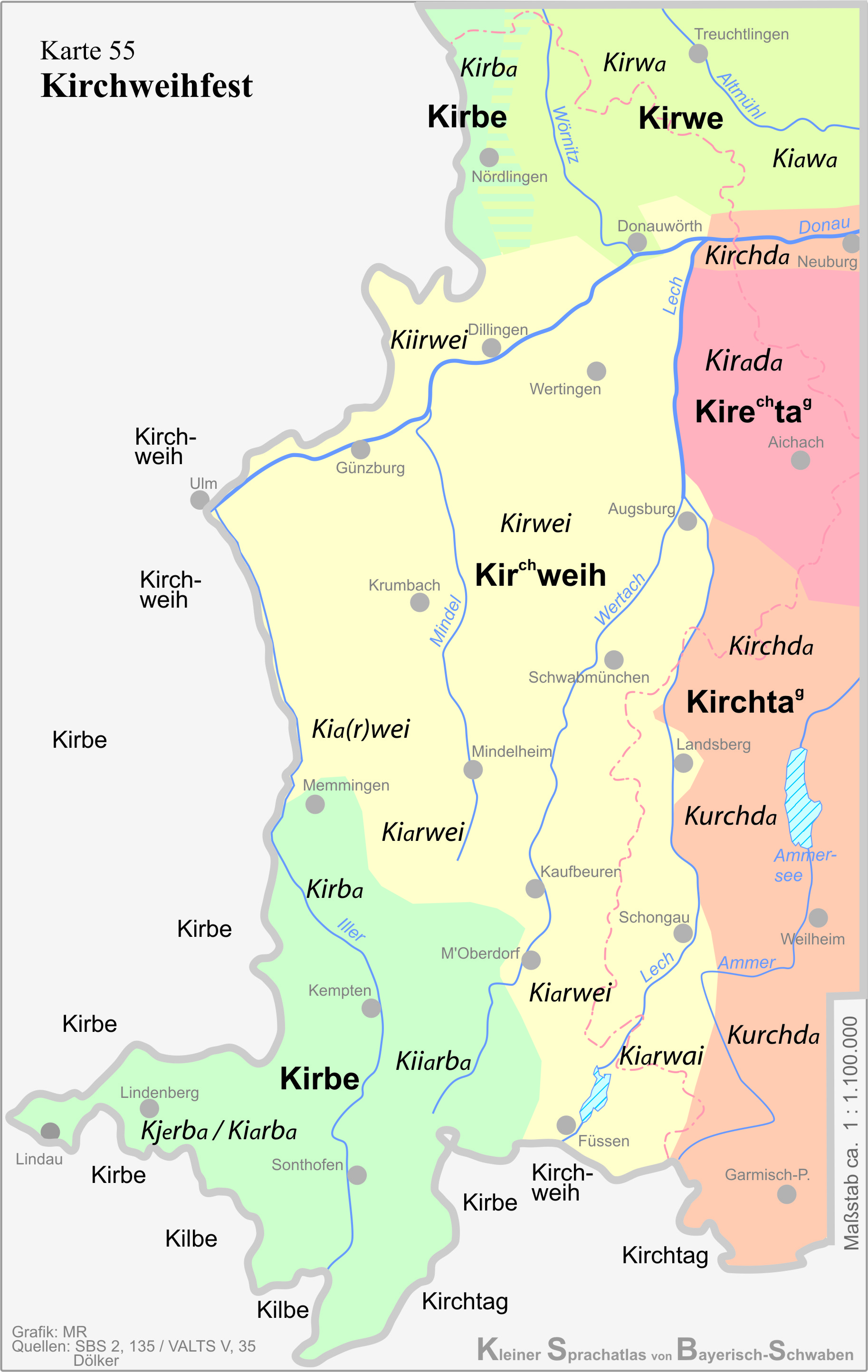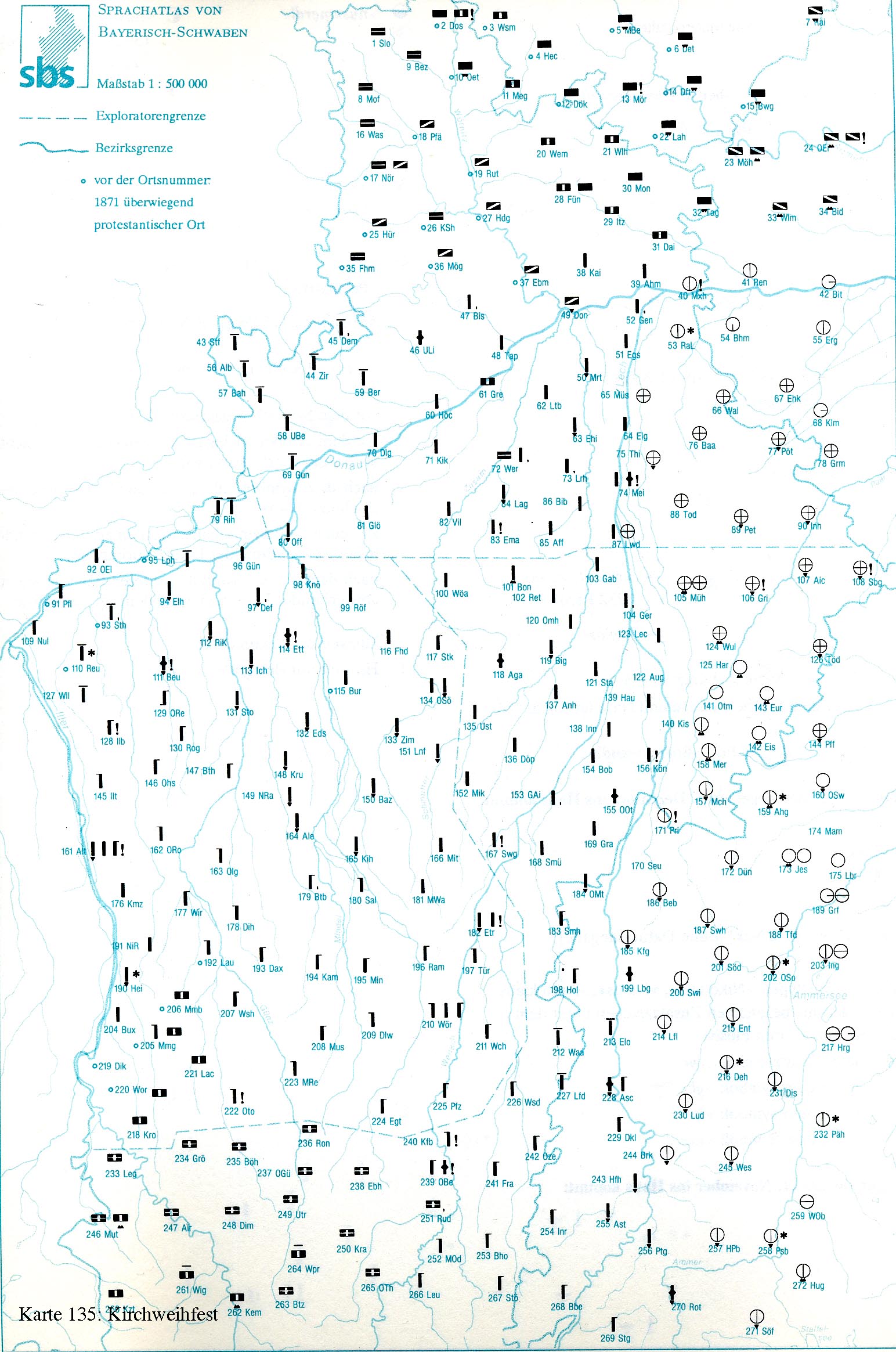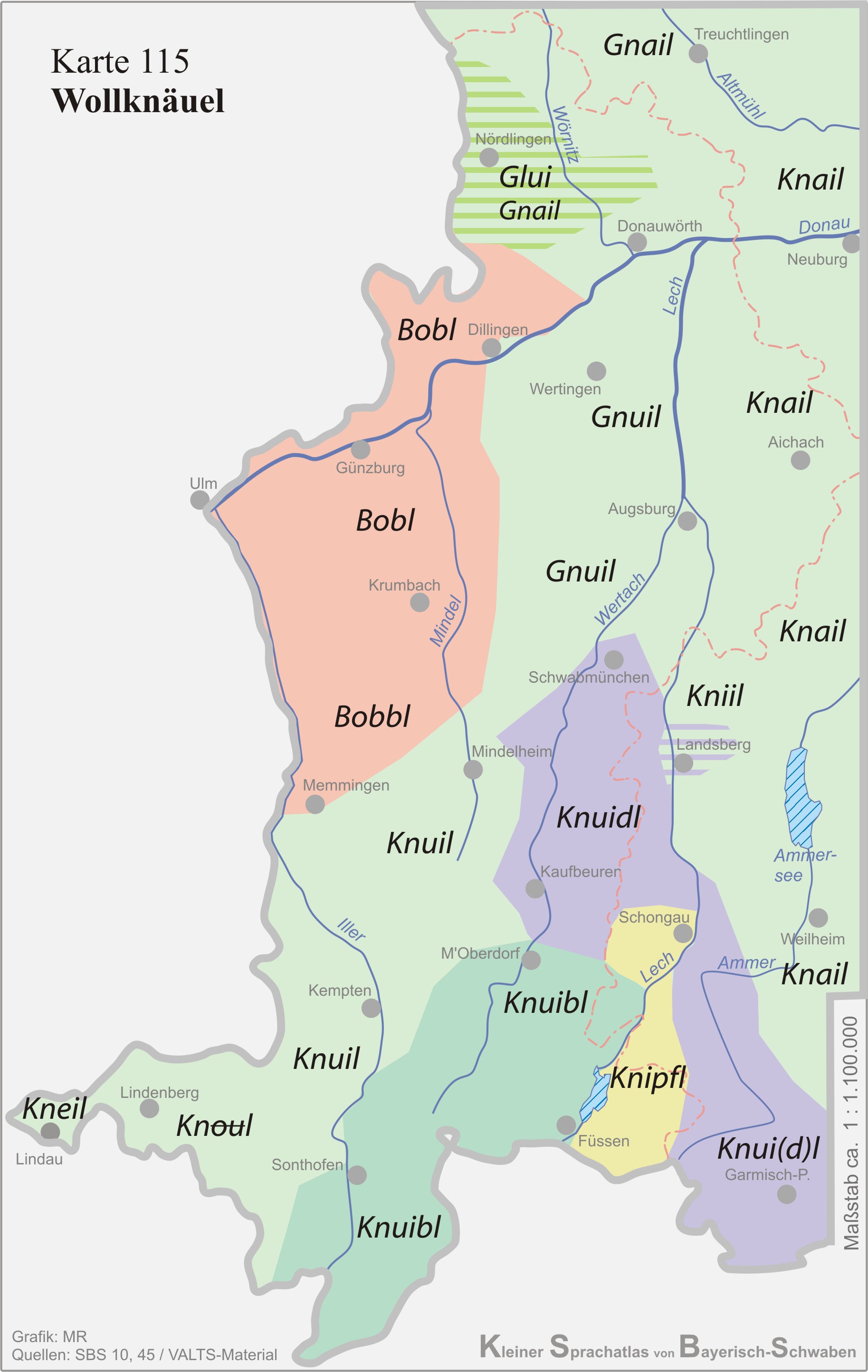New dialectometry using methods of stochastic image analysis
This project is based on the data published in the linguistic atlas of Bavarian-Swabia. This data is also available in digital form. The linguistic atlas contains more than 2600 charts in 13 volumes which makes it one of the most comprehensive linguistic atlases in the world. No existing atlas for the German language is more comprehensive. This material shall be edited quantifyingly by using methods that go well beyond the present state in dialectologic research. So far, research in this field has been developed mainly in Austria (Goebl) and in the Netherlands (Nerbonne, Heeringa). However, this research is based on distance measurements; they deal with creation of spaces and boundary lines based on similarities measured in different ways. These methods don't allow the recognition of specific patterns or recurring spatial structures that vary in themselves, e.g. circles with different radii or hierarchised wedges. The methods that are going to be developed in the course of the proposed project after intensive preliminary work, however, allow measuring charts' complexities as well as quantifying the validity of boundary lines and the homogeneity of "language areas".
The exemplarily described possibilities of the system to be developed open up new possibilities for linguistic research by automating and 'objectifying' complex interpretation methods, especially with respect to language typologic structures and language change phenomenas. The scientific proceeding of this task is the methodologic progress that results from the fast analysis build on consistent scales of geographical structures and their quantitative processing more than solving concrete dialectologic problems. The work in the scope of this project shall result in a software system which can also be applied to other kinds of cultural data exhibiting geographical distributions and which features an easily manageable user interface.
This research project is supported by the DFG and a cooperation with the Chair of German Philology, University of Augsburg.
The software system GeoLing developed in this project has been published at www.geoling.net.
Contact persons: Prof. Schmidt, Prof. Spodarev and Aaron Spettl



